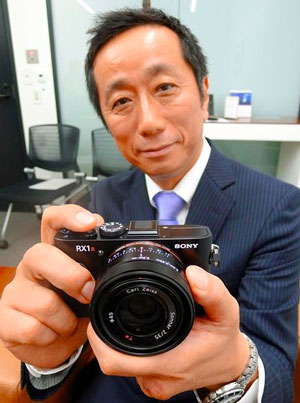While CaNikon — the still dominant players in the standalone camera market — keep on copying each other and incrementally improve their technologies, competitors Fujifilm and Sony are thinking outside the box. While Fujifilm is betting on the retro form factor supported by its outstanding experience in imaging technology, Sony pushes the limits — what was not long ago considered impossible becomes consumer reality: especially high-end cameras are helping to return brand image to the Japanese powerhouse, reports The Asahi Shimbun. And when you produce unique quality, you can even ask for higher prices than the competition:
Sony Corp. is restoring its bruised brand image with products that were initially derided by its rivals. The home appliance manufacturer’s compact cameras are winning over customers in the high-end market that has been long dominated by traditional camera makers.
Sony’s renewed confidence has led it to forecast a big jump in sales for the current year.
The turning point came in May, when Sony’s Cyber-shot DSC-RX1, the top model of its compact camera series, won the Camera of the Year award from Camera GP Japan. It was the first time for an electric appliance maker to win the most prestigious camera prize in Japan.

“But we have finally obtained strong brand power,” Maki said.
Sony had previously been known for its innovation and hit products. But in recent years, the company has posted huge losses, particularly in its TV production business, and been forced to lay off workers and sell assets. Analysts said chronic structural problems at Sony have prevented it from keeping pace with its overseas rivals.
Even the RX1 came under criticism before its release in November last year. Industry analysts questioned whether anyone would buy a camera with a lens that is not interchangeable and with no zoom function, especially at a price of (currently) $2,798.
But it was the high-performance lens that largely contributed to the winning of the award. “The lens itself is worth more than 150,000 yen ($1,500),” said a person in the camera industry.
With a resolution of 24.3 million pixels, the RX1 features a large image sensor — the same size as that of single lens reflex cameras.
The RX1 can adjust the image sensor and the lens by a thousandth of a millimeter to set them perfectly parallel and eliminate distortion. Such precision is unavailable in single lens reflex cameras because their sensors and lenses are produced separately, according to Sony.
For example, an RX1 photo of the world-famous rock garden in Ryoanji temple in Kyoto clearly shows the outlines of gravel on the surface.
Sony has been producing the RX1 at full capacity, targeting amateur photographers with advanced skills. Although sales of the RX1 are under 10,000 units a month, its solid reputation has helped to spread the popularity of other Sony models. The company’s upscale items, including the RX100, have recently been selling well.
In May, the average price of Sony’s compact digital cameras rose up 15% from the same month last year. The prices of products from other camera makers fell slightly over the same period. Sony camera prices were, on average, 6,000 yen ($60) more than those of other companies in May.
Sony on July 5 released new products, including the RX1R model, which can take more detailed photos than the RX1.
The electronics maker estimates that sales of high-end compact digital cameras equipped with large image sensors will rise 1.5 times in 2013 compared with the previous year.
Sony in 2006 acquired the business of the “α” single lens reflex camera series from Konica Minolta Inc., and has positioned the brand as one of the two main pillars of its camera business. The other pillar is the Cyber-shot compact camera series.
Addendum: Now just imagine Sony’s future prospects with a mirrorless full-frame system camera looming…


